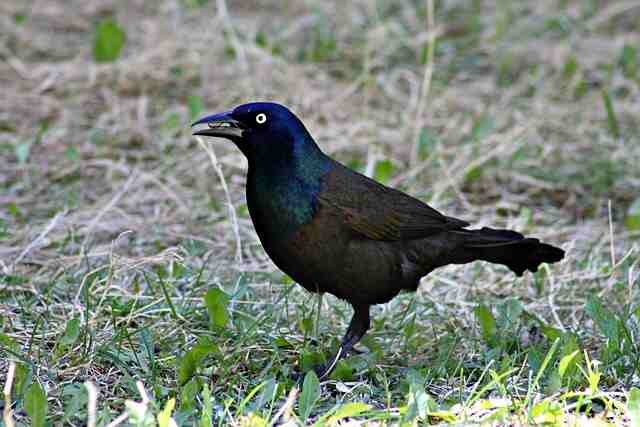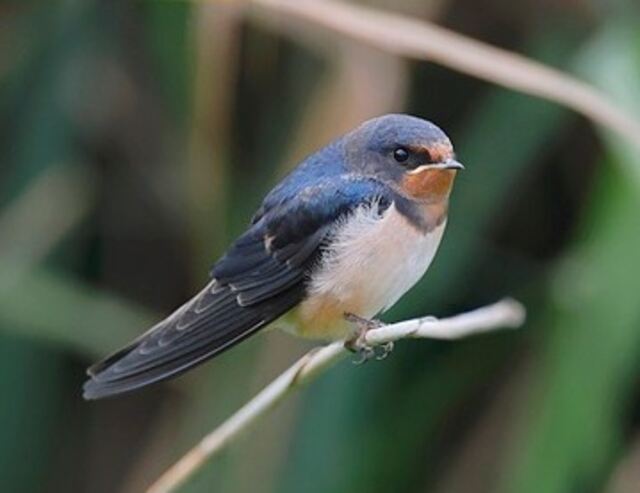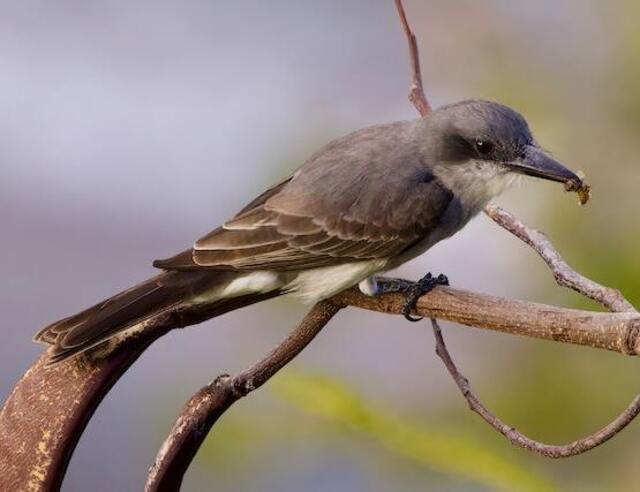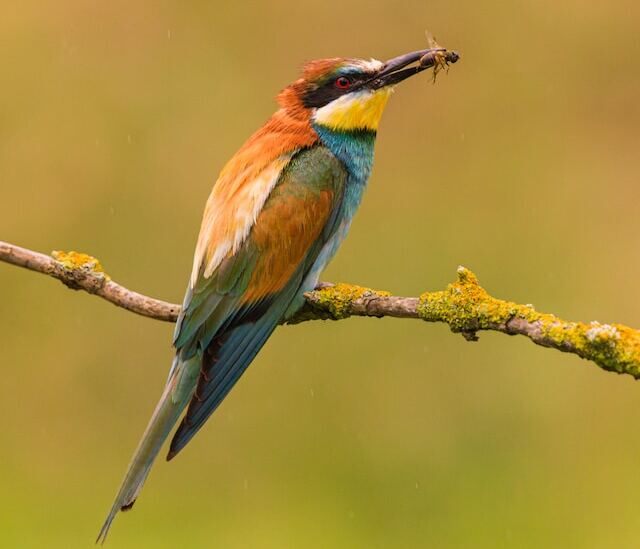Buzzing with curiosity and chirping with anticipation, we delve into the age-old question: Do birds and bees get along? As nature’s ultimate odd couple, these feathered and buzzing creatures share more than just the spotlight.
From delightful partnerships to surprising showdowns, discover the fascinating world of their interactions and unravel the secrets behind their harmonious (or not-so-harmonious) coexistence.
Brace yourself for a wild journey through their enchanting ecosystem!
Table of Contents
- 0.1 Brief Explanation of the Topic
- 0.2 Importance of Understanding the Relationship Between Birds and Bees
- 1 The Overview of Birds and Bees
- 2 Do Birds and Bees Interact?
- 3 Conflicts Between Birds and Bees
- 4 How Humans Affect the Relationship Between Birds and Bees
- 5 Conclusion
- 6 FAQs: Do Birds And Bees Get Along?
- 6.1 Do birds and bees get along?
- 6.2 Are birds harmful to bees?
- 6.3 Do birds eat bees?
- 6.4 How do birds and bees interact in nature?
- 6.5 Can birds and bees share the same nesting area?
- 6.6 Do birds attack beehives?
- 6.7 Do bees have any defenses against birds?
- 6.8 Can birds and bees compete for resources?
- 6.9 Do birds benefit or harm bee populations?
- 6.10 Are there any mutual benefits between birds and bees?
- 7 Author
Brief Explanation of the Topic
Birds and bees are two of the most well-known and beloved creatures in nature. They are often associated with beauty, freedom, and the joys of life.
However, there is more to birds than initially meets the eye. Birds and bees play an integral role in many ecosystems, from pollinating flowers to spreading seeds and controlling pest populations.
Despite their many similarities and overlapping habitats, little is known about the relationship between birds and bees.
While both species play important roles in pollination, seed dispersal, and pest control, it remains unclear whether they interact with one another or compete for resources.
This article aims to shed light on this fascinating topic by exploring how birds and bees interact in nature. We will examine their behavior, habitat preferences, potential conflicts as well as mutualistic relationships.
Importance of Understanding the Relationship Between Birds and Bees
The relationship between birds and bees is critically important for maintaining healthy ecosystems around the world.
Both species have unique roles to play in keeping plant populations healthy while also providing food sources for other animals such as mammals or insects.
Pollination is one key area where birds and bees overlap: they both play an essential role in ensuring that plants thrive by transferring pollen from one flower to another.
Without them (or other pollinators), many plant species would be unable to reproduce successfully, leading to a decline in food supply for many organisms.
Furthermore, understanding how birds affect bee populations can help us better manage both species’ conservation efforts effectively.
With climate change threatening habitats worldwide, it has become more critical than ever before that we understand what factors influence bird-bee interactions so that we can take appropriate measures accordingly.
– The relationship between birds & bees spans beyond simple physical co-existence and touches on critical aspects of our ecosystem such as food chains & reproduction, impacting both biodiversity and the environment’s sustainability.
The Overview of Birds and Bees
Before diving into the interaction between birds and bees, it is important to understand the characteristics, habitat, and behavior of these species.
Both birds and bees are important pollinators that play a crucial role in maintaining ecosystems. However, they differ greatly in their physical makeup, daily routines, and habitats.
Characteristics of Birds
Birds are warm-blooded animals that lay eggs to reproduce. They have feathers for insulation and flight, unique beaks suited for their diet type, strong legs with sharp talons for perching or hunting prey on land or water surfaces.
Birds come in various colors, shapes, sizes with different abilities such as flying at high speeds or diving deep underwater.
Birds also have excellent eyesight with the ability to perceive ultraviolet light, which enables them to navigate through complex environments quickly.
Additionally, they have a well-developed sense of hearing, which allows them to communicate effectively with other birds through song or calls.
Habitat and Behavior of Birds
Their habitats vary widely from forests to deserts, as well as aquatic areas like wetlands or open waters where they nest during breeding seasons.
Generally speaking, birds are social creatures that live in groups called flocks; however, some types of bird species prefer solitary lifestyles, such as eagles or owls.
Birds are known for their impressive migration patterns, where they travel thousands of miles each year seeking food sources during seasonal changes.
Their dietary preferences range from seeds to fruits and insects, depending on the species-specific requirements.
Birds exist in almost all corners of the planet, except for constant extreme cold areas around Antarctica.
They exhibit various habits, including singing songs during mating season when trying to attract mates or defending territories against predators like snakes or other birds of prey.
Do Birds and Bees Interact?
While birds and bees may seem like two completely different species, they do interact with each other in nature. These interactions can range from mutualistic relationships to competition for resources.
Mutualistic Relationships Between Birds and Bees
One example of a mutually beneficial relationship between birds and bees is the pollination of flowers. As bees gather nectar from flowers, they transfer pollen between the male and female flower parts, allowing for the fertilization of seeds.
Birds, on the other hand, feed on insects that may harm or damage flowers, which is required by bees to pollinate them effectively.
Another example of this relationship is the behavior of certain bird species that follow bee swarms in order to feed on insects that are disturbed by the movement of bees.
In turn, these birds help keep insect populations under control, which benefits both themselves and the bees.
Competition for Resources
Despite these mutualistic relationships, there are also instances where birds and bees compete for resources such as food or nesting sites. For instance, some bird species will eat bees or their larvae if they come across them while foraging for food.
Similarly, some bee species will compete with certain bird species over nesting sites.
This competition can also lead to negative impacts on both populations, since resource limitation may not allow enough food or space to accommodate both groups simultaneously.
Birds as Pollinators
In rare cases, birds can also play a role as pollinators for certain plant species through their feeding habits.
For example, hummingbirds have long beaks that allow them access to nectar deep within flowers that other pollinators cannot reach easily, which results in effective cross-pollination between plants.
However, it is important to note that while birds can be effective pollinators for certain plant species, they cannot replace the role of bees as primary pollinators due to differences in behavior and anatomy.
Conclusion
The interactions between birds and bees in nature are complex and dynamic. While mutualistic relationships do exist between them, competition for resources is also present, which highlights the importance of maintaining a balanced ecosystem.
Understanding these interactions can help us appreciate the intricate relationships that exist in nature and inspire us to take actions towards their conservation.
Conflicts Between Birds and Bees
While birds and bees can coexist peacefully, there are also instances where their relationship is strained due to competition for resources. One of the most common conflicts between these two species is foraging for food.
Birds and bees have similar diets, which means they may often find themselves searching for the same nectar-rich flowers or other food sources like fruit trees or berry bushes.
In addition to competition over food, there may also be conflicts over nesting sites.
Both birds and bees need safe, secure places to build their nests and raise their young. However, the ideal nesting sites for both species may overlap, leading to disputes over who gets to utilize that space.
Competition for Resources
Birds and bees are important pollinators in many ecosystems. They play a vital role in helping plants reproduce by carrying pollen from one plant to another. As such, competition between these two groups can have significant impacts on local ecosystems.
For example, if there are too many birds in an area that relies heavily on pollination from bees, it could lead to a decline in bee populations as the birds consume more of the available resources.
Likewise, if there are too many bees in an area where birds rely heavily on certain types of flowers or fruit trees as a food source, it could lead to a decline in bird populations.
In some cases, human activities like deforestation or urbanization can exacerbate these conflicts by reducing available habitat for both species.
This can lead to increased competition for dwindling resources and further strain on their relationship.
The Importance of Finding Balance
Despite these potential conflicts between birds and bees, it’s important to remember that both species play critical roles in maintaining healthy ecosystems.
Finding ways to balance their needs and reduce competition for resources is key to ensuring their continued coexistence.
One way to do this is by creating diverse habitats that can support a variety of bird and bee species.
This might include planting a mix of flowering plants and trees that bloom at different times throughout the year, providing nesting boxes or other structures for both birds and bees, and limiting pesticide use to minimize harm to both species.
Ultimately, it’s up to all of us to take responsibility for preserving the delicate balance between birds and bees.
By working together to create healthy habitats that can support both species, we can ensure their continued coexistence in the natural world.
How Humans Affect the Relationship Between Birds and Bees
The Impact of Human Activities on Bird and Bee Populations
Human activities, such as agriculture, urbanization, and the use of pesticides, have a significant impact on both bird and bee populations. Habitat destruction poses one of the largest threats to birds and bees alike.
With increasing urbanization, natural habitats are destroyed or fragmented, leaving birds and bees with fewer resources to survive. The shrinking of natural habitats can lead to a decline in population numbers for both species.
Additionally, the use of pesticides in agriculture has been implicated in colony collapse disorder (CCD), which has caused massive declines in bee populations.
In addition to habitat destruction and pesticide use, climate change is also having an effect on bird and bee populations.
Changes in temperature patterns disrupt breeding cycles for both species, leading to a decrease in reproduction rates. This can have long-term effects on populations if not addressed.
Positive Human Actions that Benefit Birds and Bees
While human activities have had negative impacts on bird and bee populations, there are positive actions that can benefit both species.
Efforts to protect natural habitats through conservation efforts promote biodiversity by providing much-needed resources for birds and bees alike.
Planting native vegetation provides much-needed food sources for bees, while also attracting birds.
In addition to habitat protection efforts, people can also help promote bird and bee populations by reducing their use of pesticides or choosing organic farming methods instead.
Creating green spaces within urban areas can provide nesting sites for birds, while also promoting pollination by bees.
Negative Human Actions that Affect Birds and Bees
Human activities that negatively affect bird and bee populations include habitat destruction through deforestation or construction projects without proper consideration for wildlife protection measures.
Pollution from chemicals used in industry or agricultural practices can degrade water quality or damage soil ecosystems critical to the survival of birds and bees.
Climate change has also been shown to negatively affect bird and bee populations, particularly in regions where temperature rises or changes in rainfall patterns disrupt breeding cycles.
It is important for people to recognize that their actions have an impact on the environment and take steps to minimize their negative effects.
The Importance of Understanding Human Impacts on Birds and Bees
Understanding human impacts on bird and bee populations is essential for conservation efforts. By recognizing the negative effects of human activities, we can take steps to mitigate them.
We can also promote positive actions that benefit both species through habitat protection, reducing pesticide use, and creating green spaces within urban areas.
Maintaining healthy populations of birds and bees benefits humans as well by providing ecosystem services such as pollination for crops, pest control, and the dispersal of seeds.
The loss of these ecosystem services can have far-reaching consequences for our food systems and overall biodiversity.
Understanding how humans affect bird and bee populations is critical for promoting conservation efforts.
Our actions have a significant impact on these species’ survival, making it essential that individuals take steps to reduce their negative effects while promoting positive ones.
Conclusion
Overall, the relationship between birds and bees is a complex one that involves both competition and mutualism. Birds and bees interact in a variety of ways, sharing resources and influencing each other’s behavior.
This interaction is important for maintaining healthy ecosystems, as both birds and bees play crucial roles in pollination. However, human activities can negatively impact the relationship between these two species.
One key takeaway from this article is that while birds and bees may compete for resources like nectar or nesting sites, they also have mutualistic relationships where they benefit from each other’s presence.
For example, some bird species will consume insects that harm plants pollinated by bees, thereby indirectly benefiting the bee population.
Another important point to note is that human activities such as habitat destruction and pesticide use can have significant negative impacts on both bird and bee populations.
To maintain healthy ecosystems and preserve the relationship between these two species, it is important to take steps to reduce these impacts.
This can include creating more green spaces in urban areas to provide habitat for both birds and bees, reducing pesticide use through integrated pest management programs, and supporting conservation efforts aimed at protecting vulnerable populations.
While there may be conflicts between birds and bees at times, their relationship overall is one of interdependence.
By understanding this relationship better, we can work towards protecting not just these two species, but entire ecosystems that rely on their presence.
FAQs: Do Birds And Bees Get Along?
Do birds and bees get along?
Birds and bees generally coexist peacefully in nature. While they may share common resources like flowers, their interactions are minimal and do not involve significant conflict. Birds often feed on insects, including bees, but they do not specifically target bees as a food source.
Are birds harmful to bees?
Birds are not typically harmful to bees. While birds may consume insects, including bees, their diet is not solely focused on bees. Birds play a vital role in controlling insect populations, and their interactions with bees are usually minimal and unintentional.
Do birds eat bees?
Birds do occasionally eat bees, but it is not a common occurrence. Birds have diverse diets and may feed on insects, including bees, when they come across them. However, bees are not a primary food source for most bird species, and their predation on bees is generally incidental.
How do birds and bees interact in nature?
Birds and bees interact indirectly in nature through their shared habitat and resources. Both birds and bees rely on flowers for nectar and pollen, but their interactions are mostly non-confrontational. Birds may inadvertently help pollinate flowers while feeding on nectar, benefiting the bees indirectly.
Birds and bees typically have different nesting habits and requirements, so they usually do not share the same nesting areas. Birds build nests in trees, shrubs, or structures, while bees create hives or nest in underground burrows. However, both can coexist in the same general habitat.
Do birds attack beehives?
While it is rare, some bird species may occasionally attack beehives, particularly if they are searching for insects or seeking shelter. However, this behavior is not common, and most bird species do not pose a significant threat to beehives or actively target bees for attack.
Do bees have any defenses against birds?
Bees have evolved various defense mechanisms to protect themselves from potential predators, including birds. They may sting birds or other threats as a means of defense. Additionally, bees often congregate in large numbers, making it difficult for birds to capture and consume individual bees.
Can birds and bees compete for resources?
Birds and bees can compete for certain resources, such as flowers that provide nectar and pollen. However, competition between them is usually minimal, as they have different foraging strategies and preferences. The availability of diverse floral resources generally allows both birds and bees to coexist without intense competition.
Do birds benefit or harm bee populations?
Birds do not significantly harm bee populations. While birds may occasionally prey on bees, their impact is usually minimal and does not pose a significant threat to overall bee populations. In fact, birds help control insect populations, including potential bee pests, which indirectly benefits bee populations.
Are there any mutual benefits between birds and bees?
Birds and bees can have mutualistic relationships. Birds may inadvertently assist in pollination when they visit flowers for nectar, transferring pollen from one flower to another. This unintentional pollination by birds can benefit both plants and bees, contributing to ecosystem health and biodiversity.








